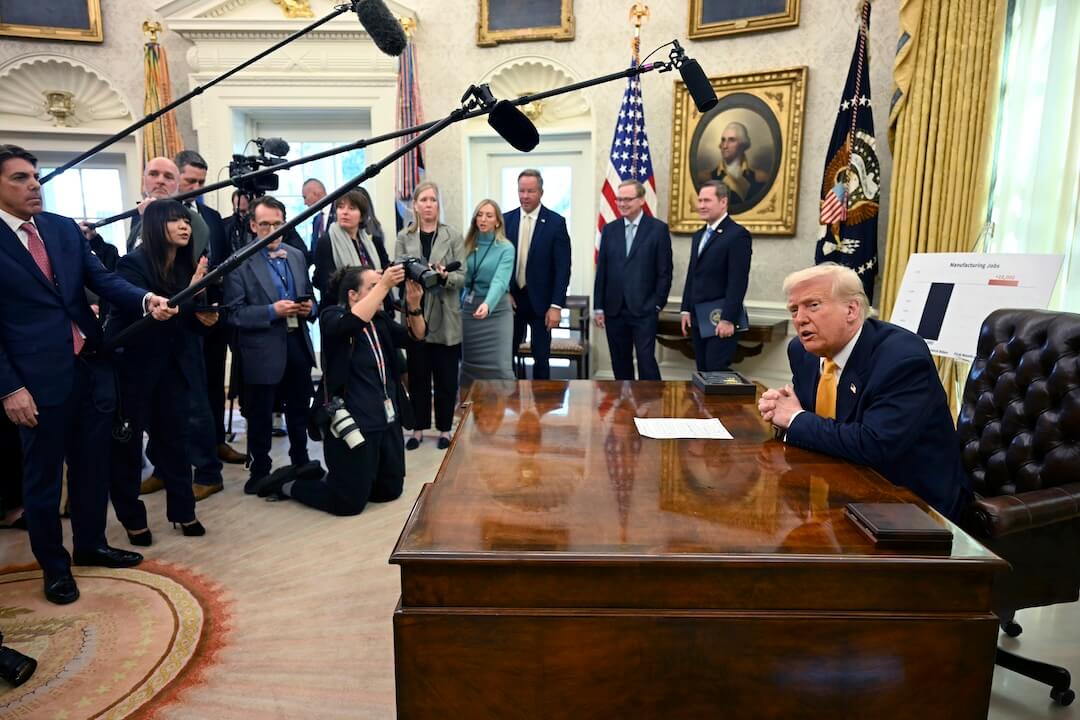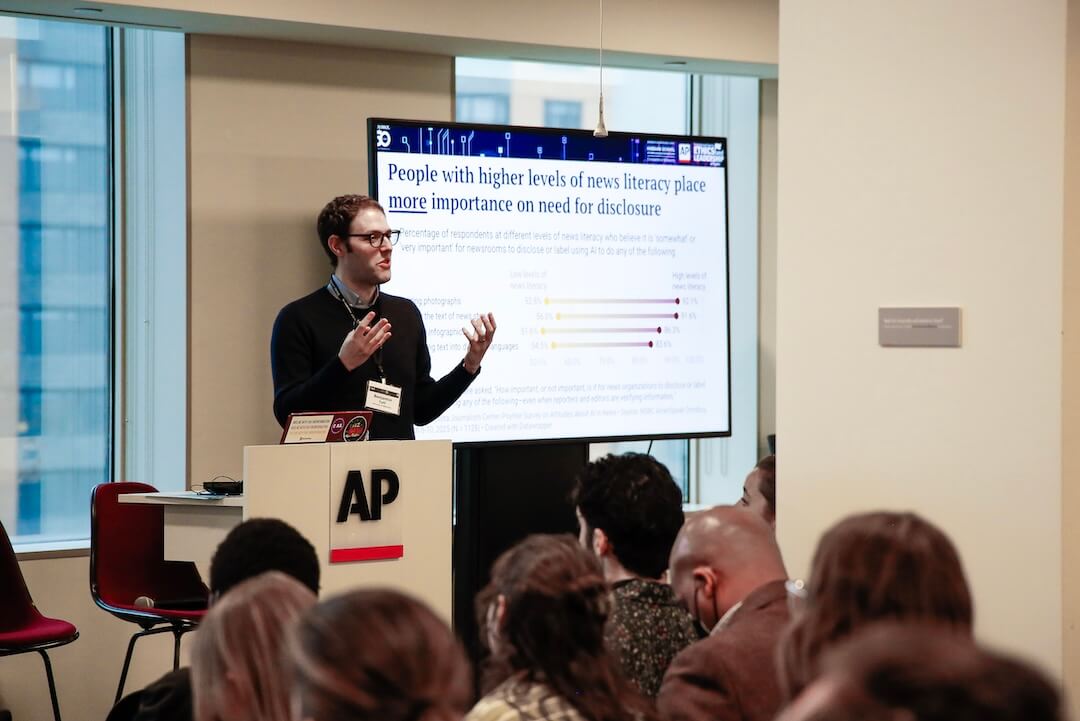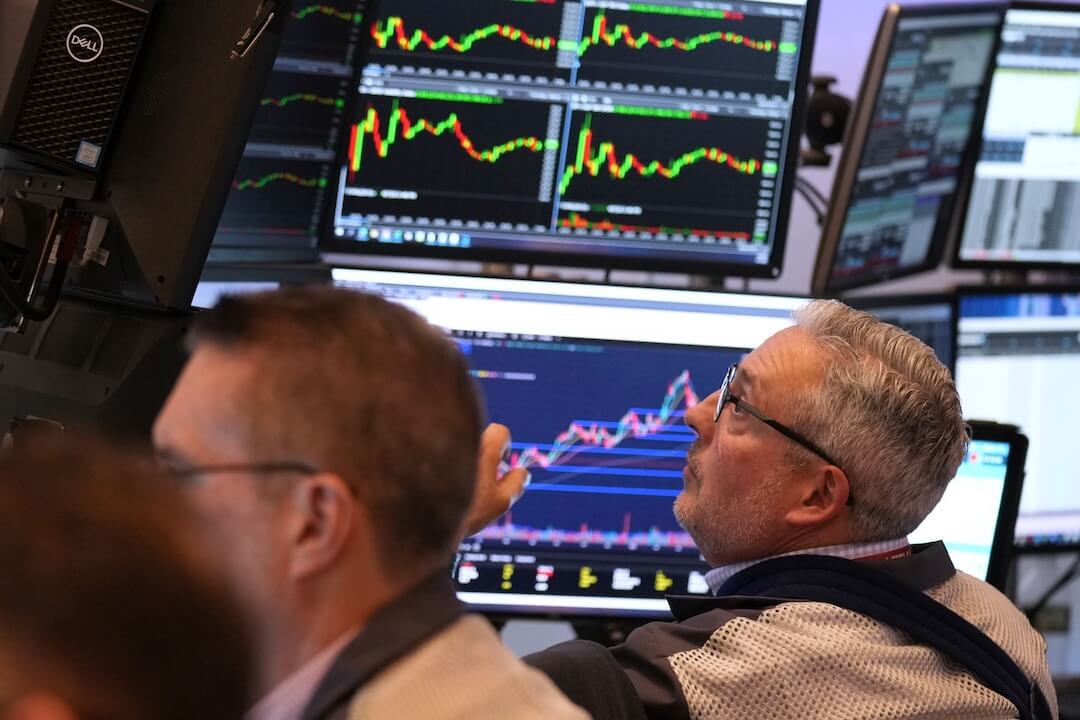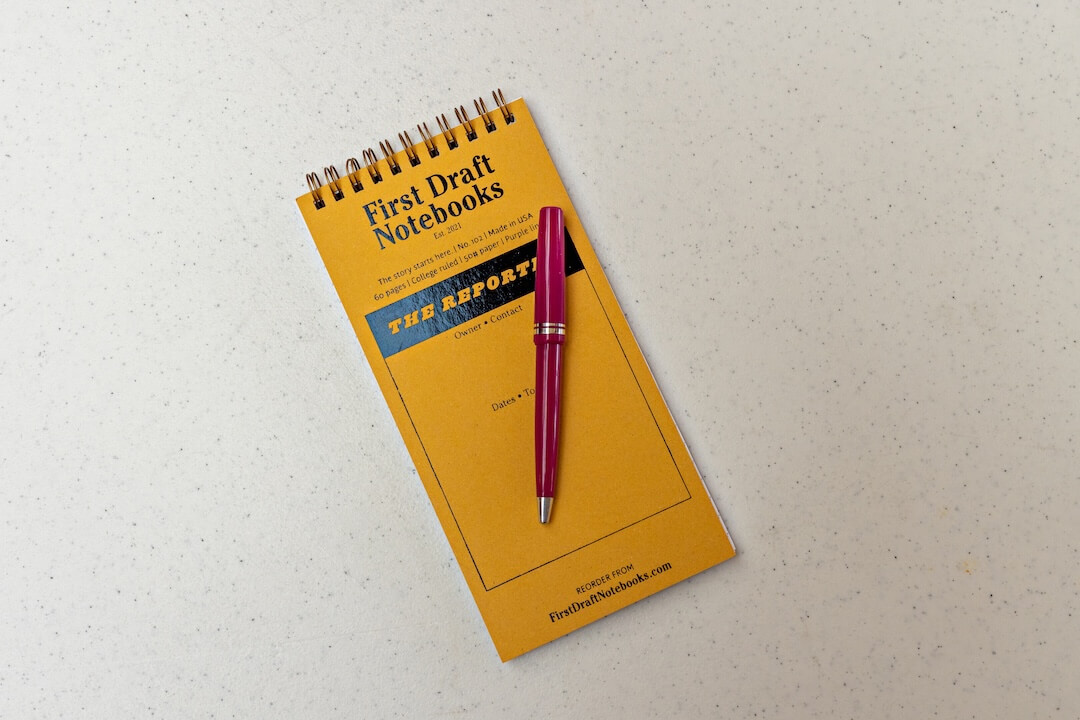Lots of people still have questions about the COVID-19 vaccines. What’s in them? Who developed them? Do they have legal liability? Are they effective?
These are some of the questions we came across in a recent Instagram post that lists things “critical thinkers” are asking about the vaccines. It also disparages the reasons why other people have followed public-health advice and gotten vaccinated.
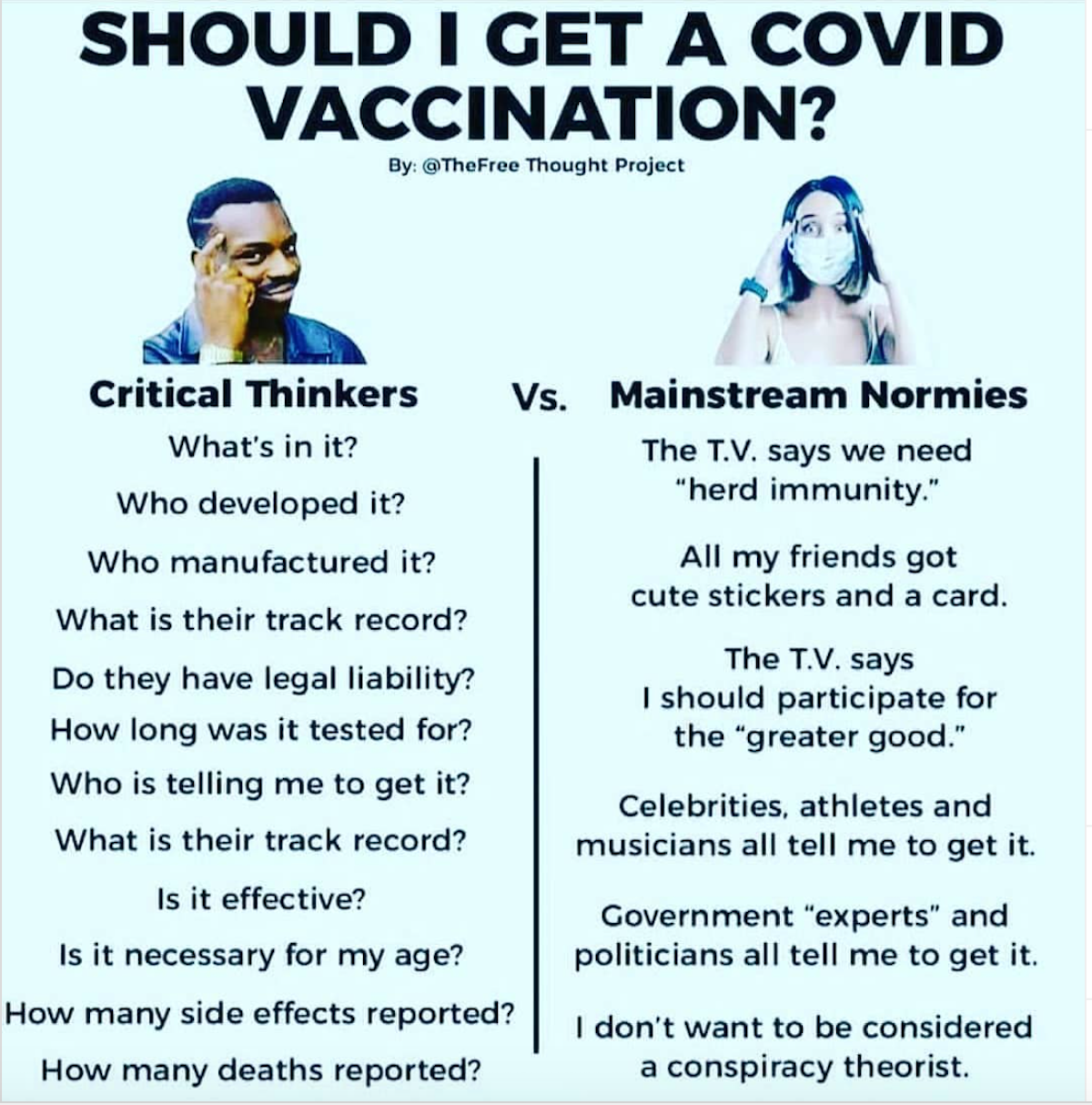
(Instagram)
These are good questions that are worth asking. Since we get these types of inquiries a lot at PolitiFact, we wanted to address them head on, following the questions raised by the post.
What’s in it?
None of the vaccine makers are hiding what’s in their shot. The ingredient list for each vaccine is publicly available.
When the Pfizer/BioNTech COVID-19 vaccine received emergency use authorization from the U.S. Food and Drug Administration on Dec. 11, its ingredient list was published online in a fact sheet for recipients and caregivers. The list includes mRNA, lipids, salts, sugar and saline solution.
Traditional vaccines introduce an inactivated or weakened version of a virus for the body to fight against. Pfizer and Moderna’s COVID-19 vaccines use messenger RNA, which is a fragment of the virus’ genetic material. It works by giving the body instructions to produce copies of the protein present on the surface of the coronavirus, without causing sickness from the disease. The immune system then learns to recognize the protein and produce antibodies against it.
As for the rest of the ingredients, the lipids are fats used to encase the RNA, the salts help keep the pH, or acidity, of the vaccine close to that of a person’s body; and the sugar safeguards the fats when they’re frozen and stops them from sticking together, according to MIT’s Technology Review, which spoke with experts to help decode the contents.
Before injection, the vaccine is mixed with the saline solution, just as many intravenously delivered medicines are, the report said.
Moderna also released a similar list of ingredients through the FDA, with a slight difference that may explain the different storage needs for each. The Pfizer vaccine needs to be kept at minus 70 degrees Celsius, while the Moderna vaccine can be shipped at minus 20 degrees Celsius and can be stored in a refrigerator for up to 30 days after that.
The Johnson & Johnson vaccine is different. Instead of RNA, it uses a disabled adenovirus to deliver instructions to produce the coronavirus’ spike proteins and activate the immune system. The ingredient list includes alcohol, citric acid, salts and sugars.
[the_ad id=”667826″]
Who developed (the vaccines)?
Pharmaceutical companies Pfizer, Moderna and Johnson & Johnson developed the vaccines available in the U.S. The companies were working on vaccines for other pandemic illnesses, and that gave them a jump-start on the COVID-19 vaccine development process.
Pfizer
The Pfizer vaccine was co-developed with BioNTech, a biotechnology company based in Mainz, Germany.
BioNTech was co-founded by scientists Ugur Sahin and Ozlem Tureci, a husband-and-wife team, in 2008. Sahin told TIME that after reading about the first identified cases of the virus in January 2020, it was clear to him that COVID-19 was already spreading around the world.
BioNTech was primarily a cancer-vaccine company and had put in more than a decade of research and development into its mRNA-based cancer vaccines, with some promising results. When COVID-19 hit, the company was just starting to look into creating a similar type of vaccine for infectious diseases like the flu — in partnership with Pfizer.
The company had an emergency meeting and decided to put all its efforts into using the technology to develop a vaccine that would neutralize the virus. It quickly expanded its small team who worked nights and through holidays to develop successful candidates.
But BioNTech needed a big partner to manufacture the vaccines for trials and, potentially, for people around the world. That’s where Pfizer came in.
With a relationship already established, Sahin proposed the collaboration with Kathrin Jansen, Pfizer’s vaccine research chief, during a March 1 phone call.
Moderna
Moderna’s vaccine was co-developed by Moderna Inc., a biotechnology company based in Cambridge, Mass., and the National Institute of Allergy and Infectious Diseases, which is part of the National Institutes of Health. Moderna has worked with the NIH on vaccines since 2017.
Moderna has been working on mRNA technology for years. That’s why Moderna was able to develop a candidate so fast, with CEO Stéphane Bancel contacting NIH vaccine researchers in January 2020 about the concerning virus outbreak in China.
Johnson & Johnson
The Johnson & Johnson vaccine was developed by Janssen Vaccines in Leiden, Netherlands, and its Belgian parent company, Janssen Pharmaceuticals, a subsidiary of U.S.-based Johnson & Johnson.
When news of SARS-CoV-2 — the virus that causes COVID-19 — hit early last year, Johnson & Johnson began to research potential vaccine candidates in partnership with the Beth Israel Deaconess Medical Center, an affiliate of Harvard Medical School.
The company credits that partnership, as well as the all-hands-on-deck collaboration with public health authorities and private sector companies, as the catalysts behind the vaccine’s development and effectiveness.
Who manufactured it? What is their track record?
Pharmaceutical companies often make their own drugs or partner with organizations that have FDA-approved manufacturing plants with greater capacity.
Moderna’s vaccine is predominantly manufactured at its base in Cambridge, though the company also has operations in Switzerland, with biotechnology company Lonza; and in Sweden with Recipharm, a pharmaceutical manufacturing organization.
Lonza, which also has sites in the U.S., is helping Moderna supply vaccines outside the U.S. The companies plan to establish manufacturing sites at Lonza’s worldwide facilities as part of a 10-year plan, which aims to supply 1 billion doses per year.
Pfizer and BioNTech produce their vaccine using a network of facilities that span the U.S. and Europe; it includes thousands of U.S. workers in multiple states and localities. BioNTech also announced it would start producing the vaccine at one of its manufacturing plants in Marburg, Germany. Pfizer explains its distribution approach on its website.
Johnson & Johnson partnered with Merck, a multinational pharmaceutical company headquartered in Kenilworth, N.J., to help make its vaccine. Merck is using its facilities to produce the vaccine’s active ingredients, as well as formulate and fill vials of the vaccine. The company has partnerships with other manufacturers, too, including Catalent Inc., in Indiana and Michigan-based Grand River Aseptic Manufacturing.
All of these companies are subject to significant government regulation, especially around vaccines. Some are large multinationals with a variety of lines of business.
Pfizer was founded 172 years ago. It’s credited with discovering citric acid, and it mass produces penicillin and vitamin C.
It has faced lawsuits over price gouging and fraudulent advertising, including a 2009 health care fraud case when consumers claimed it sold a defective anti-inflammatory drug called Bextra. The U.S. government ordered it to pay $2.3 billion for fraudulent marketing. But we were unable to find any significant problems associated with its vaccines, which include shots for smallpox, polio and DTaP.
Johnson & Johnson has been around since 1886. Its most popular brands include Band-Aids and Tylenol, but the bulk of its revenue comes from prescription medications. It has faced its fair share of lawsuits, and has issued recalls of some of its products, including its baby powder in 2019 over asbestos concerns. The company is considered a small player in the vaccine world, putting only two on the market before COVID-19.
Moderna doesn’t have much of a track record. It was founded recently, in 2010. Its pioneering experience refining mRNA technology, however, was what helped it get on the map with its COVID-19 vaccine.
Do they have legal liability?
Vaccine manufacturers aren’t above the law, but they are protected from being sued in cases where vaccines cause unintended side effects. Because of the urgency of the pandemic, COVID-19 vaccine makers have received additional protection.
In 2020, the Department of Health and Human Services Secretary Alex Azar invoked a 2005 law called the Public Readiness and Emergency Preparedness Act, which prevents vaccine companies like Pfizer and Moderna from being sued if their vaccines cause unintended side effects, unless there’s “willful misconduct” by the company. The protection lasts until 2024.
Vaccine manufacturers have to properly manufacture the vaccines and could be found liable if they knowingly released a tainted product.
[the_ad id=”667872″]
How long were the vaccines tested?
Moderna submitted data to the FDA 13 weeks into a clinical trial. Pfizer and Johnson & Johnson also submitted data after monitoring trial participants for two months after their second dose.
The companies have continued to monitor trial participants to gauge long-term effects. In April 2021, six months into its clinical trial, Pfizer announced that its vaccine has remained effective for participants and that it has noticed no serious safety concerns so far.
Adverse events that can “plausibly be linked” to the vaccination tend to occur about a week and a half after someone has been vaccinated.
Who is telling me to get it? What is their track record?
While the president, the CDC and celebrities are urging people to get vaccinated, so are ordinary medical professionals and local family doctors.
For example, the American Academy of Family Physicians, which represents over 130,000 family physicians, residents and students, recommends the vaccines and commended the recent authorization for adolescents, as well as the Biden administration’s intent to distribute the shots directly to family practices.
“This is a welcome change, as recent survey data from the Kaiser Family Foundation suggests patients would prefer to receive the vaccine from their own physician,” Dr. Ada D. Stewart, the organization’s president, said in a news release.
She added: “It is vital that children and adolescents be vaccinated against COVID-19, when eligible, in order to protect their own health, as well as that of their families and communities. We encourage our patients to speak with their family physician about how to get the vaccine.”
Certainly, physicians’ track records vary. Most patients will ultimately have to make judgments about how much they trust their doctor or the health care to which they have access.
Are the vaccines effective?
A rigorous regulatory process and real-world evidence have established that the COVID-19 vaccines are effective.
According to the CDC, clinical trials showed the Pfizer vaccine to be 95% effective at preventing COVID-19 infections. That means that the people who received the vaccine were 95% less likely to become infected than those who received a placebo.
The efficacy rates were 94% for Moderna and 66% for Johnson & Johnson. The Johnson & Johnson vaccine was also found to be 85% protective against severe disease.
No vaccine is 100% effective, and some fully vaccinated people may still get infected by the coronavirus. But the clinical studies showed the vaccines generally kept people from getting seriously ill.
Further studies have since supported trial findings. A CDC study published March 29 found that under “real-world conditions,” the Pfizer and Moderna vaccines were 90% effective against infections two weeks after the second dose and 80% effective 14 days after the first dose.
Is it necessary for my age?
The Pfizer vaccine is the only one available to people 12 and up. The others are available for people 18 and up.
Some people have claimed that young, healthy people should forgo the COVID-19 vaccines because they’re less likely to become seriously ill or die from the disease.
However, public health experts say that even young, healthy people can get seriously ill or die from COVID-19. They can also spread the coronavirus to vulnerable people and could potentially incubate new variants that could be resistant to the current vaccines. Vaccination can help prevent those outcomes.
[the_ad id=”667878″]
How many side effects have been reported?
The COVID-19 vaccines tend to trigger a range of passing side effects in a lot of people. Most recipients have reported mild or moderate reactions, such as fatigue, headache, some arm soreness or a fever. They usually resolve without complications in a day or two.
“Your immune system is responding. It sees the bad guy, and it’s making the good guys,” said Dr. Patricia A. Stinchfield, a pediatric nurse practitioner and president-elect of the National Foundation for Infectious Diseases. “It’s a small, one- to two-day sense of illness, and it is far, far better than having COVID disease.”
In evaluating possible side effects, health researchers and public-health officials look at whether an event occurs more often among vaccinated people than in the general population.
One side effect that concerned researchers occurred in a small fraction of those who received the Johnson & Johnson vaccine. About 28 people (out of roughly 7 million who had received the vaccine) experienced severe reactions involving blood clots within two weeks of getting vaccinated. The FDA and CDC suspended vaccinations for 10 days in April while they looked into the reports, eventually concluding that the benefits of the vaccine outweighed the risks.
Both agencies warn that clotting is a potential but rare side effect of the vaccine.
How many deaths have been reported?
Three people have died from a rare blood clotting issue that the CDC has said could be linked to the Johnson & Johnson vaccine.
In other cases, people who received the vaccine contracted COVID-19 anyway; the CDC recently documented 160 patients who died with a median age of 82. These cases are known as “breakthrough” cases, and there are a small number of such cases for vaccines of all types.
As evidence that vaccines are lethal or otherwise dangerous, vaccine skeptics commonly cite reports from the Vaccine Adverse Events Reporting System, a national vaccine safety surveillance program set up by the U.S. Centers for Disease Control and Prevention and the FDA that records health issues that arise after vaccinations in the U.S.
But the agencies that run the tracking system warn that the reports shouldn’t be misinterpreted. VAERS records adverse events without confirming whether the vaccine caused them or even if they actually happened. Search results on the system come with this caveat: “VAERS reports alone cannot be used to determine if a vaccine caused or contributed to an adverse event or illness.”
It’s important to note that more than 130 million Americans have received a dose so far, with minimal complications reported despite the massive sample size.
This article was originally published by PolitiFact, which is part of the Poynter Institute. It is republished here with permission. See the sources for these fact checks here and more of their fact checks here.





